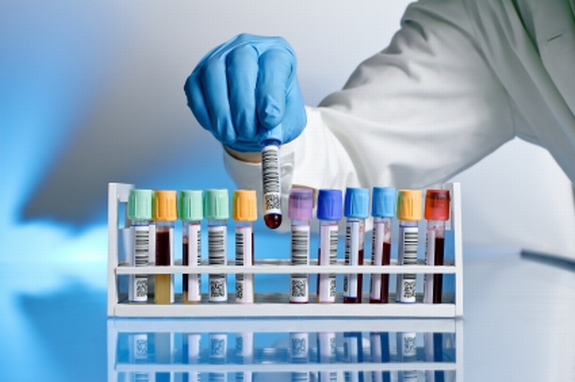Confrontation Clause: Sixth Amendment And DNA Witnesses
People v John
2016 NY Slip Op 03208
New York Court of Appeals
Decided: April 28th, 2016
Issue: Whether defendant’s Sixth Amendment right to Confrontation was violated when the court introduced DNA evidence through a surrogate expert who had not performed, witnessed or supervised the DNA testing of the samples.
Holding: Yes. The Court of Appeals held that defendant’s Sixth Amendment right to confrontation was violated when the People introduced DNA reports into evidence, asserting that defendant’s DNA profile was found on the gun, without producing a single witness who conducted, witnessed or supervised the laboratory’s generation of the DNA from the gun.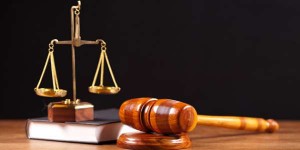
The Court of Appeals held, as the accused in a criminal prosecution, a defendant has the right to be confronted with the witnesses who bear testimony against him, Melendez-Diaz, 557 U.S. at 309, quoting, Crawford v Washington, 541 US 36, 51 [2004]. Therefore, as a rule, if an out-of-court statement is testimonial in nature, it may not be introduced against the accused at trial unless the witness who made the statement is unavailable and the accused has had a prior opportunity to confront that witness, Bullcoming, 564 US at 51-52. Forensic evidence reports admitted into evidence for proving the truth of the matter asserted are not exempt from the Confrontation Clause under Crawford and its progeny.
Facts: Defendant was involved in an altercation just outside of his apartment building, during which he pointed a gun at the complainant. Defendant’s neighbor, the ground floor resident of the three-story, multifamily brownstone, witnessed the encounter and called the police. When the police arrived and investigated, defendant was arrested. Defendant’s neighbor advised the responding officer that she had seen defendant go into the building’s basement with something in his hand. She indicated the door to the basement was the one across from her apartment.
The officer entered the basement through a latched but unlocked door. The officer searched the basement using his flashlight and found a blue box marked “Smith and Wesson and opened the box, which contained a loaded 9-millimeter handgun and an extra magazine. When later shown the gun, complainant identified it as the same one defendant had pointed at him.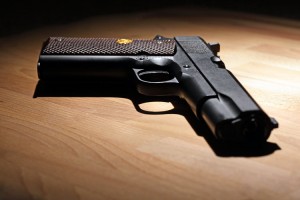
The gun was secured and an officer from the evidence collection team took three swabs from the gun to test for the presence of DNA. The officer prepared a written request for a laboratory examination on the evidence, with defendant listed as the arrestee. This report, along with the swabs, was submitted to the Forensic Biology Unit of the New York City Office of Chief Medical Examiner (OCME), plainly stating that the specific reason for the requested analysis was “PERP HANDLED THE FIREARM.”
Defendant moved prior to trial to either preclude the People from introducing the OCME laboratory reports certifying the DNA test results into evidence, or to require each analyst who had tested the DNA to testify at trial and would violate his Sixth Amendment right to confrontation to introduce the DNA evidence through a surrogate expert who had not performed, witnessed or supervised the DNA testing of the samples. The court denied the motion.
The Appellate Division overruled the objection and allowed the reports into evidence. A Justice of the Appellate Division granted defendant leave to appeal to the Court of Appeals where they held that defendant’s Sixth Amendment right to confrontation was violated.
Legal Analysis: The DNA profile evidence in this case, was used as substantive evidence to prove defendant’s guilt, as it directly linked him to the loaded gun that was found in a box in the basement. As the accused in a criminal prosecution, defendant has the right to be confronted with the witnesses who bear testimony against him, Melendez-Diaz, 557 U.S. at 309, quoting, Crawford v Washington, 541 US 36, 51 [2004]. Therefore, as a rule, if an out-of-court statement is testimonial in nature, it may not be introduced against the accused at trial unless the witness who made the statement is unavailable and the accused has had a prior opportunity to confront that witness, Bullcoming, 564 US at 51-52.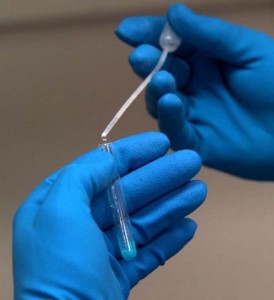
Statements that are considered testimonial include, affidavits, and statements that declarants would reasonably expect to be used prosecutorially and statements that were made under circumstances which would leave an objective witness reasonable to believe that the statement would be available for use at a later trial, Crawford, 541 U.A. at 512.
Forensic evidence reports admitted into evidence for proving the truth of the matter asserted are not exempt from the Confrontation Clause under Crawford and its progeny. The Court recognized that the Confrontation Clause may create additional burdens on the prosecution at criminal trials, but like other constitutional rights, the right of confrontation is binding and the Court of Appeals held that they may not disregard it at their convenience, 557 US at 325.
In Bullcoming, the Court, noting that Crawford in 2004 was a path marking decision, found an unsworn laboratory report certifying that the defendant’s blood alcohol level was above the legal threshold for aggravated DWI to be testimonial. At trial, the prosecution did not call the analyst who performed the gas chromatograph test, which produced a print-out of the test results of the defendant’s blood alcohol content. Instead, the prosecution introduced into evidence the laboratory report as a business record and used a different trained analyst, one who was familiar with the testing procedures and was an administrator of the statewide blood and alcohol programs, to testify as to the machine-generated results. The expert witness, similar to Huyck, was required as part of his job responsibility to provide courtroom testimony and had reviewed the reported test results, but had not supervised, conducted or observed the testing that produced the results upon which he relied for his opinion. The same scenario that occurred in Bullcoming occurred in this case, to wit, a witness who never tested the forensic evidence that incriminated an accused defendant was asserting that the non-testifying analyst’s testing results were truthful.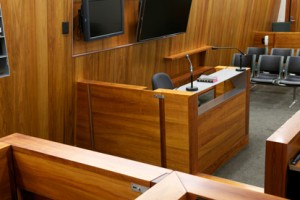
The Court rejected the argument that the “surrogate testimony” provided by the expert at trial was adequate to satisfy the defendant’s right to confrontation,(564 US at 652). The Court rejected the proposition that the non-testifying analyst had merely certified a machine-generated number, observing that an analyst, in order to work the instrument, had to have specialized knowledge and training. It further observed that “the comparative reliability of an analyst’s testimonial report drawn from machine-produced data does not overcome the Sixth Amendment bar” (564 US at 661). Reiterating that the Confrontation Clause requires that even reliable evidence be subject to cross-examination, the Court concluded that “analysts who write reports that the prosecution introduces must be made available for confrontation even if they possess ‘the scientific acumen of Mme. Curie and the veracity of Mother Teresa'” (54 US at 661, quoting Melendez-Diaz, 557 US at 319 n 6).
The Court observed that a surrogate expert would be unable to testify to what the testing analyst knew or observed about the testing process, or to the analyst’s proficiency or veracity (see 564 US at 661). [T]he Clause does not tolerate dispensing with confrontation simply because the court believes that questioning one witness about another’s testimonial statements provides a fair enough opportunity for cross-examination”(564 at 662).
The Court of Appeals held that they have deemed the primary purpose test essential to determining whether particular evidence is testimonial hearsay requiring the declarant to be a live witness at trial. A statement will be treated as testimonial only if it was ‘procured with a primary purpose of creating an out-of-court substitute for trial testimony, People v Pealer, 20 NY3d 447, 453 2013], quoting Michigan v Bryant, 562 US 344, 358 [2011]). Adhering to the decisions of the Supreme Court, The Court did not declare any iron-clad rule as to a definition of testimonial evidence. The Court has considered two factors of particular importance in deciding whether a statement is testimonial.
First, whether the statement was prepared in a manner resembling ex parte examination and second, whether the statement accuses defendant of criminal wrongdoing. Furthermore, the purpose of making or generating the statement, and the declarant’s motive for doing so, also ‘inform these two interrelated touchstones'” (Pealer, 20 NY3d at 453, quoting People v Rawlings, 10 NY3d 136, 156 [2008], cert denied sub nom. Meekins v New York, 557 US 934 [2009].
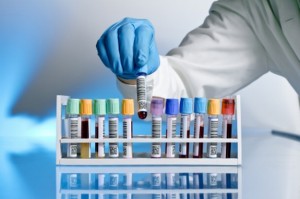
Here, there was a criminal action pending against defendant, and the gun, found in the basement of a multifamily dwelling where defendant lived, was evidence seized by police for that prosecution. Swabs from the gun were then tested by an accredited public DNA crime laboratory with the primary (truly, the sole) purpose of proving a particular fact in a criminal proceeding that defendant possessed the gun and committed the crime for which he was charged. The testing analysts purposefully recorded the DNA profile test results, thereby providing the very basis for the scientific conclusions rendered thereon. Under these circumstances, the laboratory reports as to the DNA profile generated from the evidence submitted to the laboratory by the police in a pending criminal case were testimonial.
The DNA profiles were generated in aid of a police investigation of a particular defendant charged by an accusatory instrument and created for the purpose of substantively proving the guilt of a defendant in his pending criminal action. The primary purpose of the laboratory examination on the gun swabs could not have been lost on the OCME analysts, as the laboratory reports contain the police request for examination of the gun on the basis that the “perp” handled the gun and repeatedly identify the samples as “gun swabs.” In addition, certain documents in the OCME file refer to the suspect (defendant) by name.
The facts of this case fit into even the narrow primary purpose test articulated by the Williams plurality . On this record, the admission into evidence of the laboratory reports for their truth as to the generation of the DNA profile from the gun without a testifying analyst who performed, witnessed or supervised any portion of the testing is indistinguishable from Bullcoming. The fact that defendant’s DNA profile was found on the gun was established by testimonial hearsay in the laboratory report, which could not be admitted as a business record without honoring the right of confrontation.
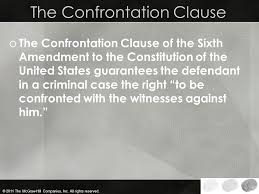 The Court of Appeals held that they cannot ignore that the People did not produce the analyst who generated the DNA profiles from either the gun or the exemplar in this case. As a result, these critical analysts who engaged in an independent and qualitative analysis of the data during the DNA typing tests, none of whom was claimed to be unavailable were effectively insulated from cross-examination. And Huyck, instead, was permitted to parrot the recorded findings that were derived from the critical witnesses’ subjective analyses. To be sure, Huyck merely exported the very DNA profiles that the testing analysts had generated to create a box score chart. Although Huyck testified that she had subsequently reviewed the reports of the DNA profile generated by the non-testifying analysts and agreed with the results they obtained in the actual performance of the testing, this is nothing more than surrogate testimony to prove a required fact ?that defendant’s DNA was found on the loaded gun for which he stood charged.
The Court of Appeals held that they cannot ignore that the People did not produce the analyst who generated the DNA profiles from either the gun or the exemplar in this case. As a result, these critical analysts who engaged in an independent and qualitative analysis of the data during the DNA typing tests, none of whom was claimed to be unavailable were effectively insulated from cross-examination. And Huyck, instead, was permitted to parrot the recorded findings that were derived from the critical witnesses’ subjective analyses. To be sure, Huyck merely exported the very DNA profiles that the testing analysts had generated to create a box score chart. Although Huyck testified that she had subsequently reviewed the reports of the DNA profile generated by the non-testifying analysts and agreed with the results they obtained in the actual performance of the testing, this is nothing more than surrogate testimony to prove a required fact ?that defendant’s DNA was found on the loaded gun for which he stood charged.
By finding the report of blood alcohol content results from a gas chromatograph to be testimonial, Bullcoming demands that where the primary purpose test has been satisfied, forensic reports offered into evidence for their truth, as here, must be assessed for their admissibility as those reports are not covered by any categorical exception to testimonial hearsay. In this regard, although we have previously held that certain DNA laboratory reports were raw data or machine-generated (People v Meekins, 10 NY3d 136, 158-159 [2008]; People v Brown, 13 NY3d 332, 340 [2009]), Huyck’s testimony and the laboratory reports admitted into evidence prove otherwise in this case.
Huyck, who made no such claim and who was not an OCME supervisor, reviewed the reports of the other OCME analysts, including the numerical DNA profiles generated after an editing process, saw that the “necessary people” had signed off and agreed with their conclusions. This blithe testimony is plainly insufficient to vitiate defendant’s right to confront the analysts who actually generated the DNA profiles. The Court concludes that Huyck’s exportation of the two identical numerical sequences into a chart so that the jury could easily see the numbers were identical is not the same as independently verifying the accuracy of testing conducted by the non-testifying analysts who produced those two DNA profiles.
To this end, Huyck was acting purely as a surrogate witness as defined by Bullcoming in vouching for the accuracy of the DNA profiles. Her conclusory testimony in this regard was based solely on the reports of the non-testifying analysts that were admitted into evidence for their truth and not based on a separate, independent and unbiased analysis of the raw data. ? An “all analysts” rule is not consistent with the decisional law. Clearly, not every person who comes in contact with the evidence, for instance, analysts who are performing duplicative work, such as reviewers, those involved in the testing of controls, or certain individuals who would only be relevant to issues as to the chain of custody, must be produced (see Melendez-Diaz, 511 US at 311 n 1). Here, the record is somewhat limited on this issue as neither the People nor defendant seriously attempted to demonstrate the importance of any one analyst or any one step in the actual DNA typing process. However, where the laboratory report is testimonial in nature, and the generation of the DNA profile in this pending criminal action was testimonial, at least one analyst with the requisite personal knowledge must testify.
An “all analysts” rule is not consistent with the decisional law. Clearly, not every person who comes in contact with the evidence, for instance, analysts who are performing duplicative work, such as reviewers, those involved in the testing of controls, or certain individuals who would only be relevant to issues as to the chain of custody, must be produced (see Melendez-Diaz, 511 US at 311 n 1). Here, the record is somewhat limited on this issue as neither the People nor defendant seriously attempted to demonstrate the importance of any one analyst or any one step in the actual DNA typing process. However, where the laboratory report is testimonial in nature, and the generation of the DNA profile in this pending criminal action was testimonial, at least one analyst with the requisite personal knowledge must testify.
Notably, courts around the country have grappled with the application of Bullcoming and Williams vis-a-vis DNA evidence and have sought to satisfy a defendant’s right to confrontation while sensibly placing some limit on the number of analysts who are necessary to testify at trial (see e.g. State v Roach, 219 NJ 58, 79, 95 A3d 683, 695-696 [2014]. However, the testimony must be provided by a truly independent and qualified reviewer of the underlying data and report, and the witness may not merely parrot the findings of another”]; Speers v State, 999 NE2d 850, 855 [Ind 2013]. The Court of Appeals concluded that an analyst who witnessed, performed or supervised the generation of defendant’s DNA profile, or who used his or her independent analysis on the raw data, as opposed to a testifying analyst functioning as a conduit for the conclusions of others, must be available to testify. Accordingly, the order of the Appellate Division is reversed.
